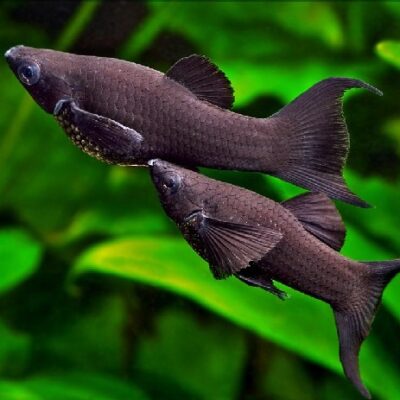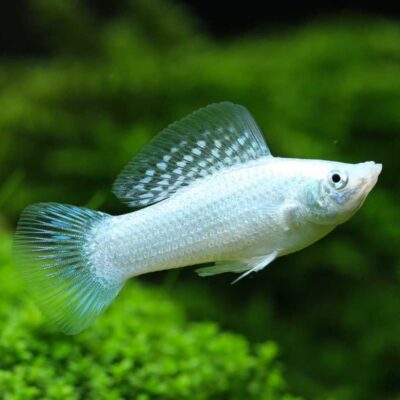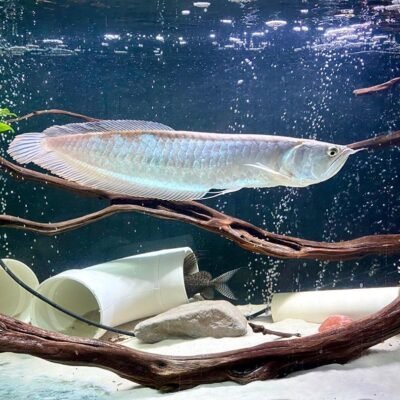GALAXY RASBORA (L) 2,5cm
Scientific Name: Danio margaritatus (Roberts, 2007)
Common Names: Celestial pearl danio (CPD), Galaxy rasbora, Galaxy danio
Greek Name:
Genaral category: Cyprinids
Order: Cypriniformes
Family: Cyprinidae
Size: 2-3 cm.
Habitat: It originates from Asia, specifically from Myanmar, and more precisely from Lake Inle. It is found in very shallow waters, up to 1 meter in depth. It is also encountered in northern regions of Thailand.
Maintenance in the aquarium
PH: 6-7,5 (Ideal: 7)
KH: –
GH: 4-15°dGH (Ideal: 7°dGH)
Temperature: 22-28°C (Ideal: 23-24°C)
Liters: 40 litres minimum for a group of 6-8 people.
Social Behavior: These fish are both social and very calm. Males sometimes exhibit competitive behavior with each other. They can enter the aquarium with other social fish but also alone in small groups - clusters of 6 or more.
Gender segregation: Sexing a herd is relatively easy. Females are duller in colour and their tails are more faded (red) than males. Still females are usually larger, especially in the abdominal area. Finally, males have a more orange-coloured abdominal area.
Aquarium decoration: An aquarium with lots of plants, wood and stones is just right. They prefer low or moderate water flow.
Swimming Zone: They prefer the middle level of the tank but will swim at all levels.
Diet: It will accept all types of food, dry, frozen and fresh. Food rich in protein since he is a "little hunter".
Maximum age in the aquarium: 2 to 4 years.
Ideal Roommates: Due to its small size it should not be placed in tanks with predators or large fish. Compatible mates can be other Danio species e.g. zebra danios or some species of tetras and even small catfish like Cory. Co-habitation with shrimps should be avoided as adults will eat the small ones. It is likely that their eggs will be eaten by adult shrimp.
Subspecies and hybrids: –
Breeding in the aquarium: Their reproduction can be considered relatively easy. The more fish we have, the higher the chances of having a litter. You will need a fairly densely planted tank with hiding places so that the fish feel more comfortable. They lay their eggs, which are transparent and tiny, usually on a plant, preferably most types of moss. It is suggested that a piece of moss from the tank be transferred to a generator tank every week, so that the eggs can be transferred to a safe environment. The chicks are not at risk as adult CPD feed only on the eggs, but this does not mean that they are not targeted by other fish species. The chicks after emptying their lecithin sac will start feeding for the first 7 days on microscopic food which we can provide with infusoria and rotorians and special microscopic commercial fry food. After that we can start feeding on artemia as well.












